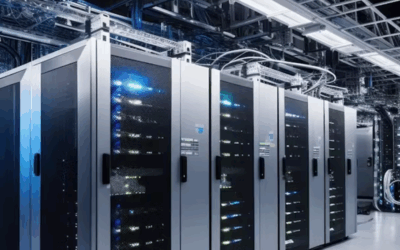The role of today’s CFO is rapidly expanding and evolving to be more critical to the business. With shifting business and operating dynamics, CFOs must become more integrated into the overall business operations, taking a step back from simply being a financial partner to acting as a strategic advisor to the CEO.
What does the new integrated and collaborative look like for today’s CFO?
Leaders need to be agile and resilient to ensure continued business success, especially in a post-digital transformation environment. Organizations of all types are facing unprecedented security challenges and need to adhere to SEC regulations. CFOs not only need to assess the financial or operational cost of an incident, but they must also be able to assess the latent business impact of cybercrime.
As with every other major industry, a dynamic shift in computing is underway, specifically edge computing. It’s business-critical for CFOs and other C-suite executives to understand the rapid evolution of the edge ecosystem in finance and how to start strategically planning and investing to secure their institutions.
Understanding the Edge
Edge computing is a strategy for computing on the location where data is generated or consumed, allowing data to be gathered and processed at the edge and in near-real-time. This reduces latency and allows rapid decision-making by either machines or humans consuming the data, For this article, let’s use the following characteristics to think about edge:
- A distributed model of management, intelligence, and networks
- Applications, workloads, and hosting closer to users and assets that are generating or consuming the data – may be on-premises or in the cloud
- Software-defined.
Through a robust quantitative survey and qualitative analysis, AT&T Cybersecurity examined the impact of edge computing within the financial sector and identified common use cases, top endpoints, and collaboration strategies to deliver better experiences and outcomes.
Edge Use Cases Within the Finance Industry
The primary edge use case identified by 204 survey participants in the finance market segment is real-time fraud prevention. Finance organizations use edge computing to attain a competitive advantage to monitor bank accounts, financial transactions, accounting invoices, and financial documents to analyze data through enriched machine learning techniques. The goal is to improve the ability to identify potentially fraudulent activity in near-real time.
ATMs use edge computing to enable near-real-time fraud detection and prevention. By analyzing the video feed from CCTV cameras and using facial recognition software, edge devices can identify potential fraudsters and alert the bank, and the police, or even lock down the ATMs if necessary. This can protect the customers’ money, the bank’s reputation, and ensure regulatory compliance.
Edge computing also enhances self-service banking by enabling faster, smarter, and more secure data processing and analytics at the network’s edge. For example, edge computing can help banks implement chatbots, robots, and fraud detection mechanisms to improve customer experience, reduce operational costs, comply with regulations, and enhance security.
Preferred devices are changing within the finance industry as well. Data shows that fixed-location computers such as kiosks are the top finance endpoint, accounting for 49% of the device category. And 52% of survey respondents are combining networking functions and cybersecurity controls in the cloud – think of this as an indicator of SASE (Secure Access Service Edge) adoption.
Opportunities to Secure the Edge Ecosystem
Edge computing is new and different – it requires input from various stakeholders with possible conflicting priorities. As financial institutions continue to innovate with edge computing, aligning stakeholders and architecting use cases as one entity with a stated and agreed-upon business outcome is critical. It’s important to note that no one-size-fits-all solution can provide complete protection for all aspects of edge computing. Instead, organizations should consider a comprehensive and multi-layered approach to address the unique security challenges of each use case. Across all stakeholders, issues such as data regulations, compliance, and security need to be considered holistically. This means proper planning, budgeting, and collaboration are central to delivering a successful edge computing use case. When determining where and how much to invest in edge computing capabilities, consider the cost of building in security from the start.
To develop a strategy for edge computing follow these three guidelines:
- Develop an edge computing profile – work with line-of-business teams to understand use cases; be sure to include key business partners and vendors.
- Develop an investment strategy – evaluate investment allocation as use cases multiply. Consider bundling security expenses with use case development.
- Collaborate to expand expertise and lower resource costs – embrace external and internal experts. Establish use case security experts.
Business leaders should understand that regulations in finance can vary greatly and it’s important to increase your compliance capabilities. This underscores the importance of not relying solely on a checkbox approach or conducting annual reviews to help ensure compliance with the growing number of regulations. Keeping up with technology-related mandates and helping to ensure compliance requires ongoing effort and expertise. If navigating compliance requirements is not within your organization’s expertise, seek outside help from professionals specializing in this area.
Take the time to align resources with emerging priorities. External collaboration allows organizations to utilize expertise and reduce resource costs. Tap into the expanding ecosystem of edge computing experts who offer strategic and practical guidance. Engaging external subject matter experts (SMEs) to enhance decision-making can help prevent costly mistakes and accelerate deployment.
Successful finance edge computing requires a holistic approach encompassing collaboration, compliance, resilience, and adaptability. By considering these factors and proactively engaging with the expertise available, organizations can unlock the full potential of edge computing to deliver better outcomes, operational efficiency, and cost-effective solutions.





